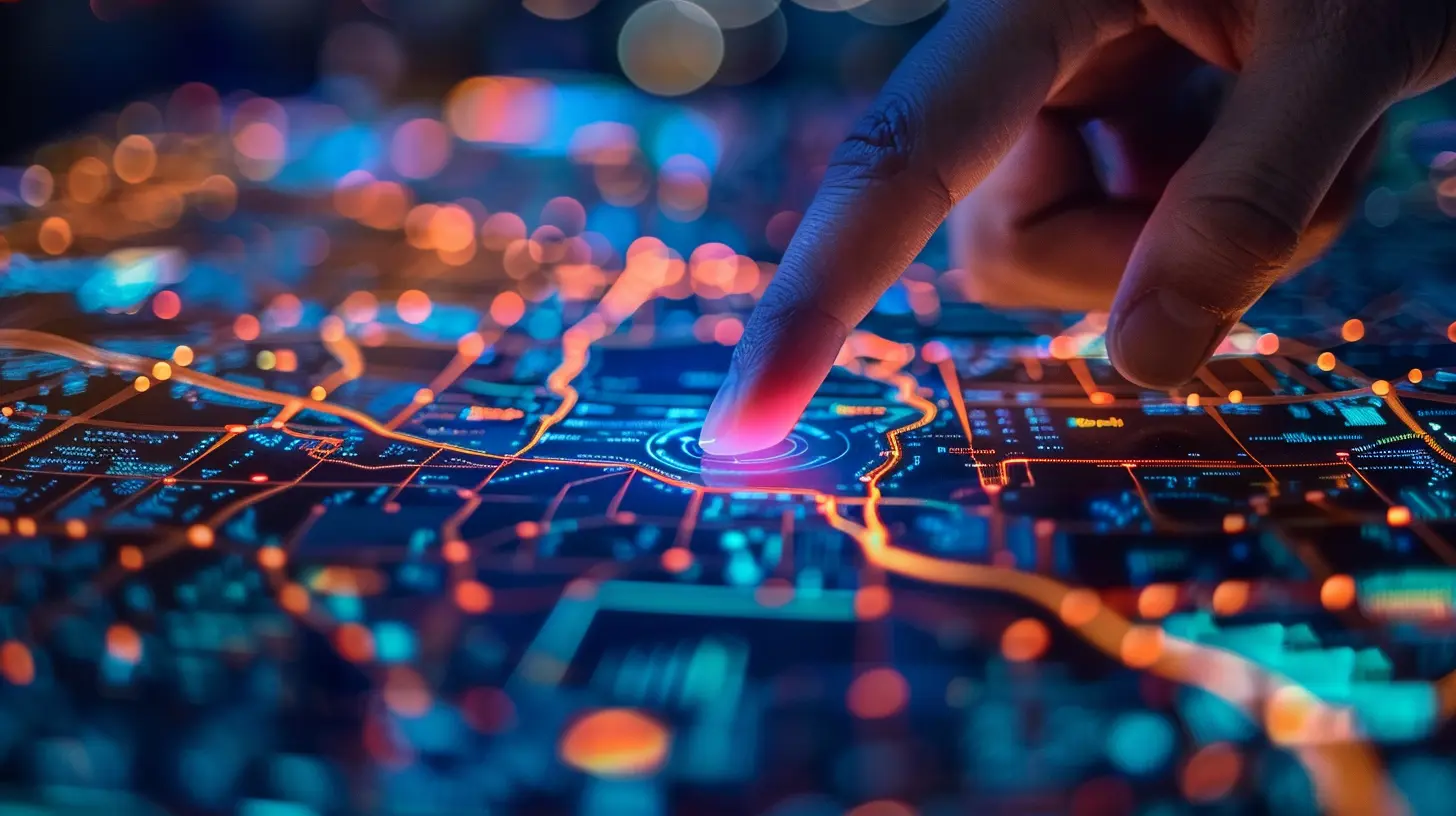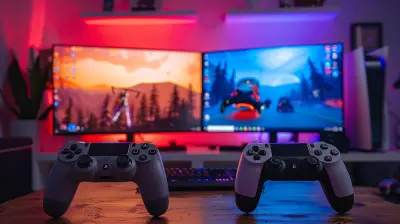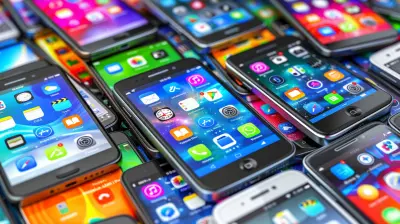Exploring the Role of Touchscreens in Smart Cities
27 October 2025
Smart cities are no longer a futuristic concept—they’re becoming a reality. With rapid advancements in technology, cities worldwide are integrating innovative solutions to enhance convenience, efficiency, and sustainability. One of the most prominent pieces of this puzzle? Touchscreens.
From interactive kiosks to smart public transportation systems, touchscreens are transforming urban environments, making life easier and more connected. But what exactly is their role in shaping the cities of tomorrow? Let’s dive in. 
The Rise of Smart Cities
Before we get into touchscreens, let’s talk a bit about smart cities themselves. A smart city leverages technology to improve public services, transportation, infrastructure, and citizen engagement. The goal? A more efficient, accessible, and sustainable urban experience.With the rise of the Internet of Things (IoT), artificial intelligence (AI), and big data, cities are getting smarter. Sensors collect real-time data, AI analyzes it, and automated systems help manage everything from traffic flow to energy consumption. But none of this means much unless people can interact with these systems easily—and that’s where touchscreens come in. 
Touchscreens: Bridging the Gap Between Humans and Technology
Let’s be honest—no one wants to navigate a city using complex, confusing tech. Touchscreens provide an intuitive way for people to interact with smart city solutions. Whether you're looking for bus schedules, finding your way through a busy airport, or making a payment at a parking meter, a well-placed touchscreen makes everything seamless.So, where exactly are we seeing touchscreens play a vital role?
1. Public Transportation Systems
If you've used a metro system in a major city, you've probably come across touchscreen kiosks. They allow commuters to:- Purchase or reload transit cards
- Check train and bus schedules in real-time
- Plan efficient routes
- Access important travel updates
Additionally, interactive information boards at bus stops and train stations provide up-to-date arrival times and even alternative routes during service disruptions. This reduces confusion and improves the overall commuting experience.
2. Smart Kiosks for City Navigation
Ever felt lost in a big city? Smart kiosks with touchscreens are increasingly being installed at key locations like:- Airports
- Shopping malls
- City centers
- Tourist attractions
These self-service stations allow you to search for nearby restaurants, get directions, or even learn about local events. Instead of wandering around aimlessly, a simple tap on a screen gets you where you need to go.
3. Enhanced Accessibility for Citizens
A city should work for everyone, including those with disabilities or language barriers. Smart touchscreens help in several ways:- Offering voice-assisted navigation for visually impaired individuals
- Language selection options for non-native speakers
- Simplified interfaces that make public services more accessible
By making information easily available, touchscreens ensure that no one gets left behind in the shift towards smarter cities.
4. Smart Parking Solutions
Finding parking in a bustling city can be a nightmare. But with touchscreen-based parking kiosks, things become a lot simpler. These kiosks allow drivers to:- Pay for parking digitally
- Extend parking time without returning to their car
- Locate available parking spots via interactive maps
Combine this with mobile apps that integrate real-time parking availability, and suddenly, parking in a busy downtown area isn’t such a headache.
5. Emergency and Public Safety Assistance
Touchscreens are also playing a crucial role in public safety. Smart city kiosks equipped with emergency assistance options give citizens direct access to help when needed. Some features include:- One-touch emergency call buttons
- Real-time reporting of city hazards (e.g., accidents, fires, or suspicious activity)
- Instant alerts about weather warnings or other emergencies
In high-traffic areas like stadiums or busy streets, these screens can offer crucial support in times of crisis.
6. Interactive Billboards and Public Engagement
Gone are the days of static billboards. Digital touchscreens are making advertising, public announcements, and community engagement more interactive. Cities are now using smart billboards to:- Provide real-time event updates
- Display public service announcements
- Engage citizens in urban planning decisions via polls and surveys
This transforms passive information consumption into an interactive experience, keeping people informed and involved in their communities. 
The Challenges of Implementing Touchscreens in Smart Cities
While touchscreens offer undeniable benefits, their integration into smart cities doesn’t come without challenges. Here are a few hurdles:Maintenance and Durability
Public touchscreens are exposed to weather conditions, vandalism, and constant use. Ensuring their long-term durability requires:- Weather-resistant materials
- Anti-vandalism designs
- Regular maintenance
Hygiene and Health Concerns
With more people becoming conscious about germs, especially post-pandemic, cities must consider touch-free interaction alternatives, like:- Voice-controlled interfaces
- Gesture-based navigation
- Mobile app integration for remote use
Security and Privacy Issues
Interactive kiosks collect user data, and keeping that data secure is crucial. Cities must implement:- Strong encryption protocols
- Minimal data retention policies
- Secure authentication methods for sensitive transactions

The Future of Touchscreens in Smart Cities
The role of touchscreens in urban technology isn’t slowing down. Here’s what we can expect in the near future:- AI-Powered Smart Kiosks – Imagine a kiosk that not only gives directions but also suggests personalized recommendations based on your interests.
- Holographic Touchscreens – Cities are already experimenting with 3D holograms that allow touch interaction without physical contact.
- Integration with Augmented Reality (AR) – Smart kiosks could overlay digital information onto the real world, offering even richer navigation experiences.
As technology continues to evolve, touchscreens will likely become even more advanced, intuitive, and essential to smart city infrastructure.
Final Thoughts
Touchscreens are quietly revolutionizing the way we interact with our cities. From helping you navigate a new place to making public services more accessible, they’re making urban life smoother, smarter, and more connected.Sure, there are challenges—maintenance, hygiene, and security being some of the biggest concerns—but with continuous innovation, these hurdles are being addressed.
As smart cities continue to grow, one thing is certain: touchscreens will play a key role in shaping the urban environments of the future. So, the next time you tap on a public touchscreen, take a moment to appreciate just how much technology is working behind the scenes to make your city smarter.
all images in this post were generated using AI tools
Category:
Touchscreen DevicesAuthor:

Kira Sanders
Discussion
rate this article
1 comments
Shania Carter
This article effectively highlights the transformative impact of touchscreens in smart cities. Their accessibility and interactivity can enhance user engagement but must prioritize inclusivity to ensure widespread usability.
October 31, 2025 at 3:38 AM

Kira Sanders
Thank you for your insightful comment! I completely agree that prioritizing inclusivity in touchscreen design is essential for maximizing their benefits in smart cities.


